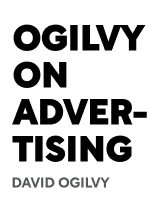

This article is an excerpt from the Shortform book guide to "Ogilvy On Advertising" by David Ogilvy. Shortform has the world's best summaries and analyses of books you should be reading.
Like this article? Sign up for a free trial here .
What are the issues with advertising? Why do some people argue that advertising is always bad no matter what?
The issues with advertising stem from the argument that advertising is inherently damaging to people. Critics of advertising claim that it’s immoral, dishonest, disruptive, and more.
Read more about the issues with advertising below.
Issues With Advertising
People point out several issues with advertising. Primarily, people feel as though advertising and product marketing is fundamentally flawed.
Complaint #1: Advertising Is Immoral
This is one of the big issues with advertising. According to Ogilvy, advertising is nothing more than a good way to sell; its morality depends on what’s being advertised. Advertising can have positive effects, such as raising money for good causes like the World Wildlife Fund. Additionally, some agencies even refuse to advertise products that conflict with their principles, such as liquor or cigarettes.
Accusations of manipulation are unfounded. At the time of writing, only two people had come up with ideas for manipulating audiences, and neither was ever put into practice:
- Market researcher James Vicary came up with the idea of “subliminal” advertising—flashing orders on TV screens so quickly that only the unconscious could pick them up. Vicary never tested it, no one used it, and the British Institute of Practitioners in Advertising banned it even though it didn’t exist.
- Ogilvy wondered if hypnotism might be effective in advertising and hired a hypnotist to make a commercial. When Ogilvy watched the commercial, it was so powerful that he burned it.
Complaint #2: Advertising Is Dishonest
Even if advertisers truly were as unscrupulous as the public seems to believe, it’s very hard to lie in advertisements. Ads are subject to many codes and go through several levels of approval before they’re allowed to run, including vetting by lawyers, the National Association of Broadcasters, and other organizations.
If an ad is accused of breaking a code, authorities such as the Better Business Bureau, National Advertising Review Board, and Advertising Standards Authority review the ads. If they turn up a violation, the Federal Trade Commission will prosecute.
Advertising to Children: One of the Biggest Issues With Advertising
One of the main ethical issues in advertising is the idea of advertising to children. There are even more regulations that advertisers must adhere to when targeting children. Ogilvy mentions several prohibitions at the time of the book’s publication. Ads weren’t allowed to:
- Tell children to ask their mothers to buy a product.
- Tell or imply that having the product makes them better than other children, or that other children won’t like them if they don’t have it.
- Show war, violence, danger, or anything too frightening.
- Show props or costumes that don’t come with the toy that aren’t common household items.
Ads had to:
- Disclose if additional products (such as batteries) were needed to make a product work the same way it did in an advertisement.
- Show a realistic play environment.
- If the product was breakfast food, there had to be both an audio and video explanation of how it fit into a balanced diet.
Political Advertising
Interestingly, the one type of advertising that has no regulatory overview is political and governmental advertising (such as for government bonds). This is because political advertising is “protected speech” according to the First Amendment. Networks were forced to run all the political commercials they received, regardless of whether they broke the codes consumer commercials have to adhere to. This leads to many possible ethical issues in advertising.
As a result, political advertising could be dishonest. For example, in the 1964 presidential campaign, Lyndon Johnson made commercials that attacked his opponent Barry Goldwater. The commercials made Goldwater seem trigger-happy and dishonest by purposely taking some of Goldwater’s remarks out of context.
Ogilvy argues that this kind of advertising is evil.
Complaint #3: Advertising Convinces People to Buy Bad Products
The third myth about advertising is that it convinces people to buy lousy products. Perhaps advertising does occasionally convince someone to buy an inferior product, but it only works once. As soon as a consumer realizes that a product is bad, they’ll never buy it again. This isn’t in a company’s best interests—repeat customers are a lot more important to profit than new ones. Ogilvy quickly dispels this as one of the ethical issues in advertising.
Complaint #4: Advertising Is Uninformative
Ogilvy agrees with this one of the issues with advertising—though factual advertisements do better than ones caught up in slogans and design, at the time of writing, agencies were tending to create less-informative ads.
- For example, when Ogilvy was looking at car ads, he found slogans and general language rather than any concrete information that would help him choose what to buy.
Complaint #5: Advertising Interrupts
Ogilvy also agrees with this complaint as far as issues with advertising. At the time of writing, the average U.S. household was exposed to 30,000 TV commercials a year. The Sunday edition of the New York Times had up to 350 pages of ads. Some radio stations devoted two-thirds of their airtime to advertising. While Ogilvy believes too much time and space is being devoted to advertising, he doesn’t expect it to decrease because it makes media outlets so much money.
Complaint #6: Billboards Are Dangerous and Ugly
Roadside billboards are a notoriously unpopular method of advertising because they’re distracting and cause vehicle accidents, and they’re ugly and clutter the scenery.
- For example, in 1958, when vigilantes sawed down billboards in New Mexico, citizens supported them. One citizen said they should have taken out more billboards (they’d cut down seven), and another had been frustrated that the vigilantes had beaten them to the punch—there had been a plan to burn a bunch of billboards later in the month.
Ogilvy considers billboards a scourge and wants to see them outlawed. They weren’t even a particularly significant facet of advertising—at the time of writing, billboards were responsible for only 2% of the advertising in the U.S.
However, he predicted billboards wouldn’t go away because:
- The billboard lobby attacked unsupportive politicians by spreading rumors, donating free space to their opponents, and creating political trouble.
- The Highway Beautification Act stated that Congress should promote outdoor advertising, and the government used billboards.
- Removing billboards could be interpreted as denial of free speech.

———End of Preview———
Like what you just read? Read the rest of the world's best book summary and analysis of David Ogilvy's "Ogilvy On Advertising" at Shortform .
Here's what you'll find in our full Ogilvy On Advertising summary :
- What the "father of advertising" has learned from his decades' of experience
- How to craft easy-to-understand ads that work
- The 6 pioneers of the advertising industry






